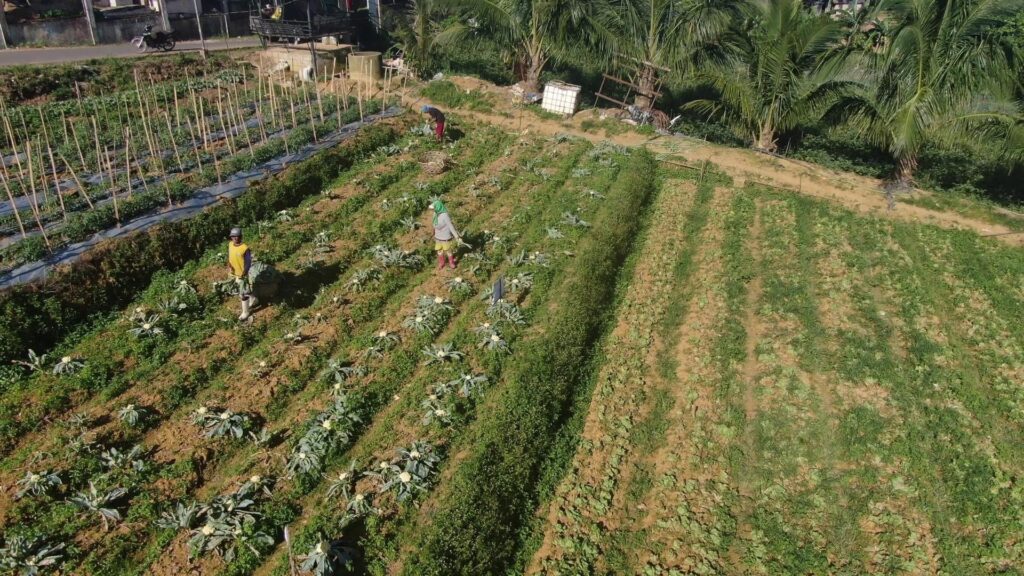2,000 Cebu farmers benefit from NIA’s irrigation system
 An areal view of farmers tending their crops. | Photo from NIA-7
An areal view of farmers tending their crops. | Photo from NIA-7
CEBU CITY, Philippines — Thousands of Cebu farmers benefitted from existing irrigation systems of the NIA or National Irrigation Administration the agency’s regional office said.
Cebu City Mayor Michael Rama recently declared a “state of calamity” in some mountain barangays in the city due to the effects of El Niño.
NIA said in press release that NIA Cebu Office oversees 41 irrigation systems that benefitted a total of 2,763 farmers across 23 barangays in the city.
A copy of the data was shared by NIA Central Visayas (NIA-7) to Cebu media on Thursday, April 4.
READ: NIA gears up for ‘strong El Niño’
These barangays were Adlaon, Agsungot, Binaliw, Bonbon, Budlaan, Buot Taup, Cambinucot, Guba, Lusaran, Mabini, Malubog, Pamutan, Paril, Pulangbato, Sapangdaku, Sirao, Sinsin, Sudlon 1, Sudlon 2, Tagbao, Taptap, Toong, and Tabunan.
Furthermore, NIA said that they also adjusted their cropping calendar and initiated the cropping season earlier than usual which started last October (used to be November) due to the adverse effects of El Niño on crop production.
For this cropping season, NIA said that they programmed irrigating 764 hectares out of 1,159 hectares firmed up service areas (FUSA). Most of the crops planted in those areas were high valued crops.
According to NIA-7’s information office, the number of hectares that were programmed to irrigate were based on the status of dams and the projections of the experts.
READ: Here are simple tips to conserve water
“Ila na gi-calculate nga ang magtanom, kana gyud makasugakod hantod harvest,” Zarline Sambas of NIA-7 told CDN.
The agency said that crops planted in the 764 hectares were successfully harvested despite the challenges brought by the El Niño.
They added that such decision came after careful evaluation and coordination with Irrigators Associations to address the projected impact of El Niño on agricultural lands.
NIA said that they aimed to ensure that all programmed areas would reach harvest before the forecasted intensification of the El Niño.
“The rains experienced in January and February this year gave hope to many farmers of high value crops to plant/re-plant, given that vegetable prices tend to surge during dry seasons due to reduced supply,” the agency said.
They added that the replanted area was approximately 454 hectares, “which are now classified vulnerable due to water scarcity.”
Consequently, NIA Cebu is also conducting comprehensive assessment of the affected areas to determine the extent of damage and the specific needs of the affected farmers.
READ: A farmer’s story: ‘There’s money in farming’
The agency said that they are also looking into provision of alternative water sources such as deep wells, water tankers, or mobile pumps in coordination with other government agencies to provide irrigation to the affected areas.
Aside from the alternative water sources, NIA will also conduct assessment and identification of affected areas to determine the Cebu farmers who will benefit the Cash for Work program of the Department of Labor and Employment to redeem their income loss.
Meanwhile, NIA said they are already exploring the construction of a small reservoir irrigation project, a proposed impounding dam in Barangay Cambinucot that aims to augment the existing irrigation systems in the mountains barangays in Cebu City.
The said proposal is now on its feasibility study stage, according to NIA-7.
READ: Mitigating El Niño, La Niña impact
Disclaimer: The comments uploaded on this site do not necessarily represent or reflect the views of management and owner of Cebudailynews. We reserve the right to exclude comments that we deem to be inconsistent with our editorial standards.
